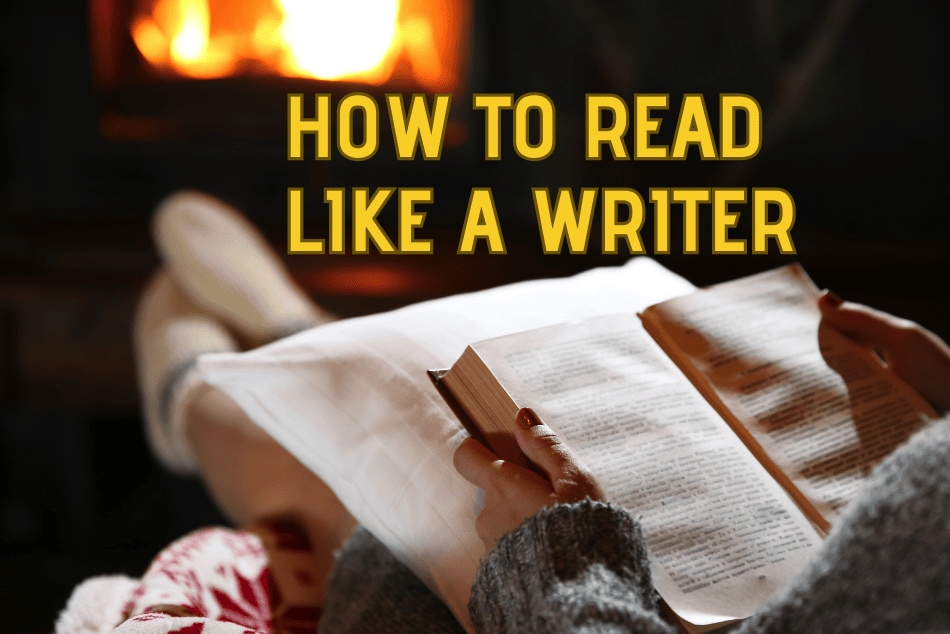This time of year, happiness is a blazing fire, a glass of wine, and a good book. Here in New England, where winters are long and cold and buried in snow, ‘tis the season for reading. My TBR pile is high—and so are my ambitions. Because while reading is one of my life’s greatest pleasures, reading is also one of my life’s greatest instructions. As I always tell my clients as well as my writing students, good writers are your best teachers.
I learned this early on in my career. When I was a young aspiring novelist, my best friend and sister writer Susan Reynolds and I took a class together at University of California at Berkeley called Reading for Writers, taught by the one and only Academy Award-winning screenwriter and novelist Jeremy Larner. We read a wide variety of work during that class, from F. Scott Fitzgerald’s The Great Gatsby to Norman Mailer’s Advertisements for Myself. Jeremy showed us how learning to read like a writer can deepen our understanding of the writing process and help us improve our own work. I took that class decades ago, and I’ve been reading like a writer ever since. Here are some tips to help you learn to do the same thing.
Read it twice.
The first time we read a story, we tend to read it to see what happens. Once we’ve read it, and we know what happens, then it’s easier to slow down and pay attention to the tricks and techniques the author uses to engage readers, achieve certain effects, and evoke particular emotions.
Read good writers and great writers.
Reading the brilliant master storytellers, the geniuses of prose is wonderful, but often the work is so subtle and nuanced and seamless that we cannot easily determine how the writers did what they did with only words on the page. Better to read the good writers, whose level of craft is high, but not so high that we cannot see the seams.
Read it in more than one format.
Read the work twice in print as advised above, then listen to it on audio, and then watch the film version (if there is a decent adaptation). With each format, you’ll notice different aspects of the work. Note the story’s strengths and weaknesses as illuminated in each format.
Take notes.
Always take notes. Scribble in the margins of print copies, mark up passages with magic markers in print or the highlighting function in e-book formats, keep a notebook full of your take-aways from each book you read.
Seek out specific elements for review.
Your comparable titles are always your best teachers. When I was working on The Hiding Place, the third book in my Mercy Carr series, I knew I needed to include a few flashbacks to make the cold case plot work. I wasn’t sure how to pull off a flashback without slowing down the story and losing the reader, so I studied the way other crime writers had handled flashbacks in their work. Thanks to Attica Locke’s Highway 59 novels, I was able to figure it out.
If you’re reading an e-book, pay attention to what previous writers have highlighted.
Most e-book formats have a function that allows readers to highlight those passages that speak to them and/or resonate with them and/or move them. Pay attention to those passages and ask yourself what about them is appealing to readers. This is an enlightening exercise. Note: When your own books are available in e-book format, check to see what readers are highlighting in your own work.
Read the oeuvre in order.
When you’re writing a series or a trilogy or the like, you’ll encounter some new challenges: What’s the series arc? How much backstory do I need to add to explain what’s happened in previous books of the series? How far do I plan ahead in terms of plot? Here again, your best teachers are your comps. To help me as I continue to write my mystery series, I’ve reread my favorite series—Julia Spencer-Fleming’s Clare Fergusson and Russ Van Alstyne, Elly Griffiths’ Ruth Galloway, Deborah Crombie’s Duncan Kincaid and Gemma James, Lee Child’s Jack Reacher, Ann Cleeves’ Vera, and Craig Johnson’s Longmire, to name just a few—in order to get a sense of the flow of successful series.
Stephen King says that for every book you write, you should read one hundred books. Winter is coming—and you’ve got reading to do. Enjoy!
This post was originally posted at Career Authors.

